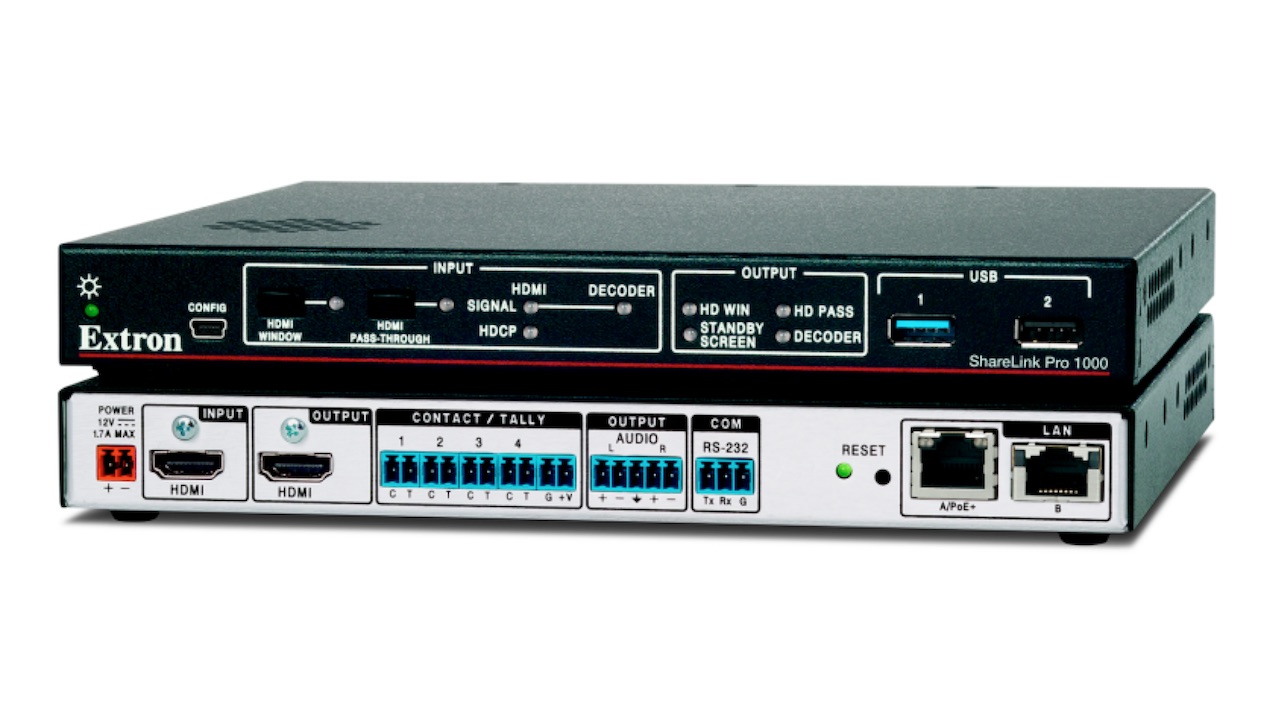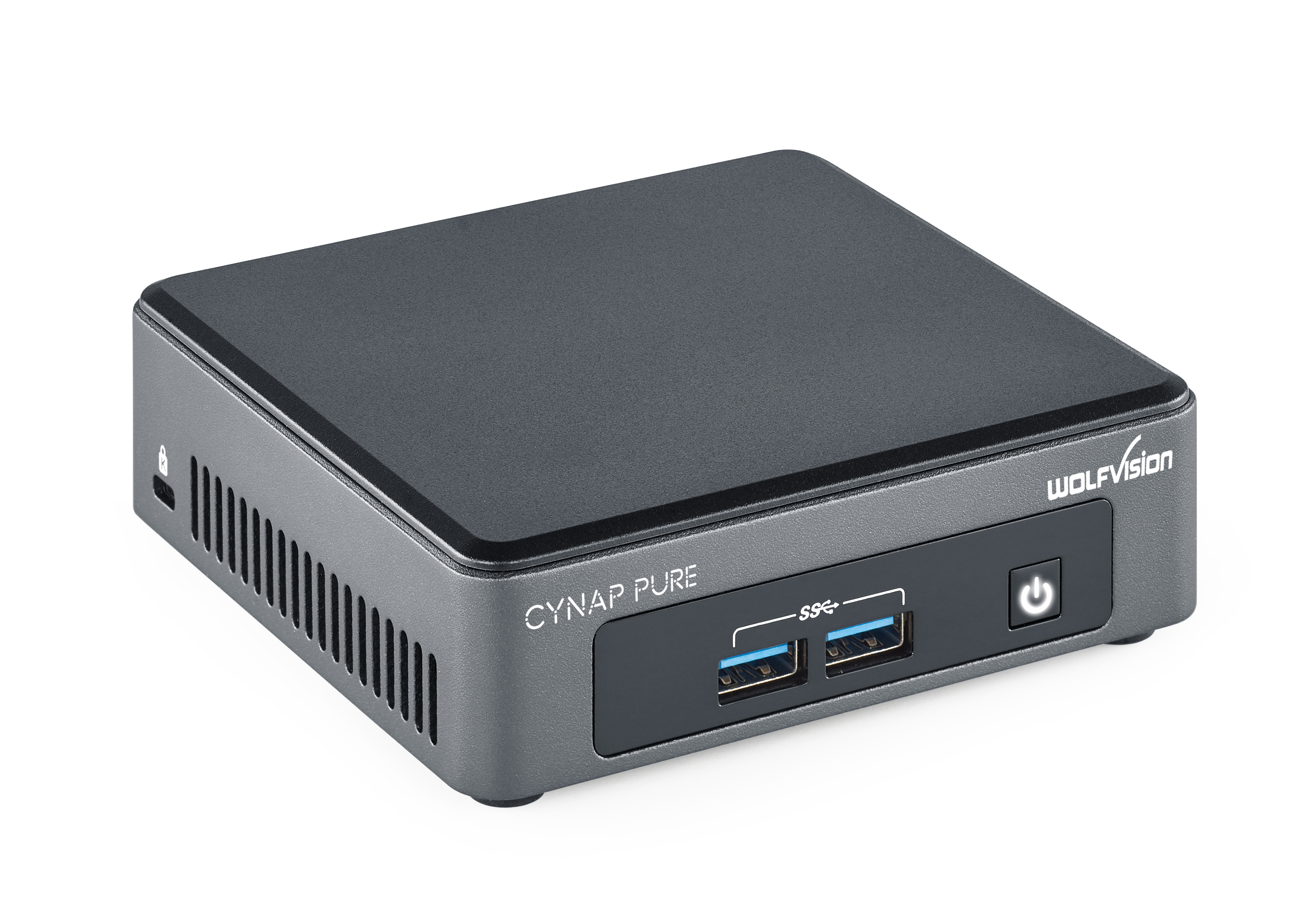A few years ago, wireless presentation may have been considered something of a workplace “bonus” for many companies and higher education facilities—something to aspire to, perhaps even a novelty, but certainly a very useful extra. Today, however, wireless presentation systems are essential for serious meeting rooms and education spaces, and the market continues to grow apace.
“Wireless presentation is no longer a nice-to-have in the workplace. It has become a must-have for most meeting rooms and most knowledge workers,” explained Lieven Bertier, segment marketing director, workplace, Barco.
According to AVIXA’s marketing opportunity assessment report, 80 percent of workers use wireless presentation technology once a month, and 57 percent claim it increases their job satisfaction.
“This leads to greater penetration of wireless presentation solutions into enterprises,” continued Bertier. “At the same time, however, there are still a lot of enterprises who have yet to go wireless.”
Scroll through the gallery below to see the latest wireless presentation products for pro AV.
Although this is clearly an established market segment, there’s still scope for growth into corporations and educational facilities that have been slow to adopt what is now seen by many as essential.
“I would characterize the market as established, healthy, and growing,” said Joe Andrulis, executive vice president, corporate development, Biamp. “There is an increasing comfort with wireless presentation among end users, and we anticipate it becoming a user expectation in the next couple of years. This applies to virtually any environment in which participants want to share content with a larger group—whether that be in corporate, education, government, or other environments.”
“We have seen strong adoption of wireless products like our ShareLink Pro Series across a variety of markets,” added Joe da Silva, director of product marketing, Extron. “Customers are increasingly requesting that their meeting spaces, classrooms, conference rooms, and other areas where people work collaboratively incorporate wireless technology.”
Bring Your Own Device
A variety of factors are driving growth in the sector, although the push toward a truly digitized workplace—boosts to employee engagement and business agility through a more consumerized work environment, with BYOD at its core—is probably the main driver.
“The way people work together is becoming a critical element in a company’s competitiveness, what McKinsey coined as the ‘interaction worker,’” said Bertier, referring to a series of studies on the future of work from McKinsey & Company that described interaction workers as high-skill knowledge workers like managers and sales consultants whose jobs require a great deal of interpersonal interaction, access to information, and independent judgment. Bertier continued, “And IT managers, facility managers, and digital workplace managers try to enable this through technology that supports BYOD.”
[The Integration Guide to Collaboration 2020]
“The proliferation of BYOD as a supported business case by end users means that more and more meeting spaces need a way for the users of those devices to meet and collaborate,” said Extron’s da Silva. “Anyone can reference the device type sales [i.e., desktop versus laptop versus tablet] to see where the trends are pointing and make the correlation to what users are bringing into these meeting spaces.”
“Sometimes a basic wireless presentation system might be enough. Perhaps it simply facilitates display of a single source on screen, for example from a laptop,” explained Simon Sprott, editor/marketing and communications, WolfVision. “But in a world where collaborative working and learning is now the norm, you are unlikely to be successfully matching the expectations of your colleagues, who are eagerly anticipating the upgrade of their meeting room technology.
“Consider also the expectations of the Generation Z cohort, who are now entering the workplace in increasing numbers, and for whom flexible digital connectivity and the ability to collaborate seamlessly together is of primary importance.”
AV and IT
While there remain some barriers to the proliferation of wireless presentation system solutions, particularly within enterprise, many of these barriers are falling away. Discussions over perceived difficulties with cooperation between IT and AV professionals now almost seem quaint, and most of these inter-industry teething problems seem to have been resolved.
“IT and AV may have been different worlds a decade ago, but today there are few to no hurdles left for AV professionals to work with IT managers,” said Bertier. “I would even dare say that there’s no AV anymore without IT. This is reflected in the rise of management solutions (cloud-based or on-premise), the adoption of ISO27k certification in the AV industry, and the ever-growing adoption—and offering—of managed services.”
Security
Concerns about security have become much less of a talking point in recent years as well, although it remains a key hurdle to clear.
“Wireless presentation sharing has become familiar enough that most substantial barriers have been addressed,” said Biamp’s Andrulis. “The one issue we still often hear mentioned, however, is ensuring network security when a system may have guests in a meeting who need to share content. How can we support this without introducing a security hole?”
“The subject of security is of paramount importance when considering the functionality of wireless presentation and collaboration systems,” agreed Sprott. “It is essential to take proper steps to ensure their secure operation in their intended environment.”
[Playing IT Safe: The State of Networked AV Security]
To facilitate secure operation, a wireless presentation system has to be designed, implemented, and properly tested, as well as installed, configured, maintained, and operated as intended by the manufacturer.
“If any of these criteria are not observed, system security of the wireless presentation system could be compromised, with potentially serious consequences,” Sprott said.
As an increasing number of AV devices are placed on networks, security becomes a key consideration—one that is compounded when said devices support wireless content sharing. Wireless presentation solution manufacturers work hard to mitigate these security concerns.
“Knowing that security is at the top-of-mind for nearly all IT professionals, Extron performs regular performance and compliance reviews for all hardware and software products we manufacture,” explained da Silva. “Additionally, we provide configuration options within the products we manufacture, enabling installation sites to tailor the operation to the individual requirements of the local authority or system administrator.”
The Future of Wireless Presentation Systems
Such technology developments are helping to inform the future of wireless presentation systems. Perhaps unsurprisingly, Barco found in its 2019 Future of Meetings research that the fundamental dynamic in presentation and collaboration is indeed BYOM.
“Bring Your Own Meeting refers to the behavior whereby employees adopt a huddle-like way of working (informal, unplanned meetings) and use their own laptop or tablet to host videoconferences,” explained Bertier. “Linked to that is the rise of the so-called SWAPs (software-agnostic peripherals, a term coined by Futuresource). Within videoconferencing, these camera and microphone accessories are the fastest growing category, leading to a better conferencing experience from the laptop!”
Putting the two trends together, it’s perhaps no surprise that manufacturers are entering the new category of “wireless conferencing,” whereby they make SWAPs wirelessly available to meeting room users.
Bertier believes that there’s also a “clear trend” for better remote meetings, leading to opportunities in the use of augmented and virtual reality, and for solutions that improve workflows.
“Two [technologies] I think are particularly worth watching are improvements to wireless networks that will continue to improve the performance of wireless presentation systems and unified communications systems, which provide an alternative content sharing option,” said Andrulis.
[The Latest in Wireless Presentation and Collaboration]
Certainly wireless network improvements will continue to make an impact. The deployment of fifth-generation Wi-Fi (IEEE 802.11ac) certainly improved the performance of wireless collaboration applications, and the transition to Wi-Fi 6 (802.11ax) will continue to drive the overall capabilities of wireless networks and the devices that utilize wireless infrastructure.
“By supporting better bandwidth and high-density connections, wireless collaboration products could offer improved image quality, reduced latency, and support for more connections,” said da Silva.
Of course, the elephant in the room in any current discussions regarding wireless presentation systems is COVID-19. With virtually everyone working from home, what impact is this likely to have on the workplace and higher education going forward?
As more employers realize that working from home is a benefit for staff and business, will this increase or decrease the demand for wireless presentation solutions? More working from home will of course mean more videoconferencing, so one would imagine this would in turn spike demand for wireless presentation.
“The key question many of us are asking themselves right now is whether COVID-19 will fundamentally change the way we work together,” said Bertier. “Will home office become more widespread? How quickly will business travel resume? Will we start preferring virtual collaboration? Fact is, we could well be on the verge of a major change in the workplace.”
How that change impacts the wireless presentation market remains to be seen, although one thing we can be certain of is that corporations and higher education establishments will have to adopt a different approach to collaboration as we move into 2021.



